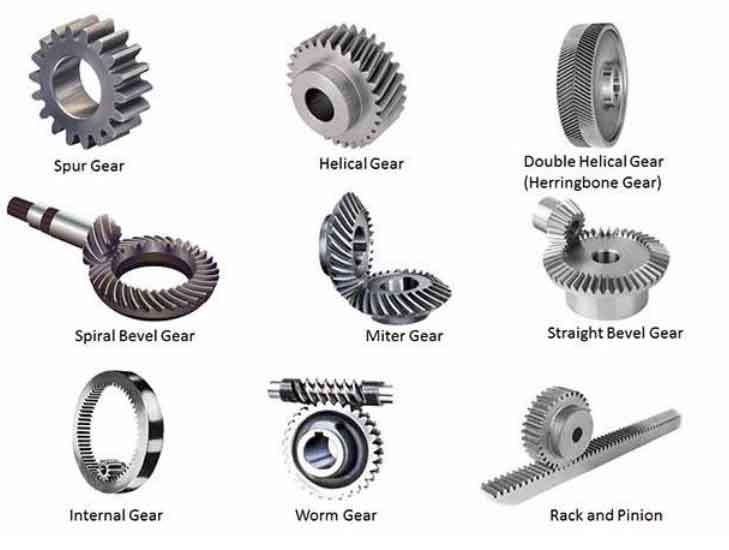Worm Gears and Bevel Gears are two different types of gears used in a variety of mechanical applications. Both have unique features, advantages, and disadvantages. Here is a comparative analysis of worm gears and bevel gears.

1.Basic Design and Structure:
Worm Gears: A worm gear consists of a worm (a screw-like gear) that meshes with a helical gear, also called the worm wheel. The worm’s helix angle is typically very shallow, giving it a high gear reduction ratio.
Bevel Gears: Bevel gears consist of two gears with conical-shaped teeth that have axes at an angle other than 90 degrees. Bevel gears can transfer force between non-parallel and non-intersecting shafts, usually at a right angle.
2.Gear Ratios and Efficiency:
Worm Gears: Worm gears typically offer a high gear reduction ratio, which enables them to provide high torque for relatively low input speed. However, worm gears are less efficient compared to bevel gears due to the sliding contact between the teeth, resulting in higher frictional losses.
Bevel Gears: Bevel gears can have various gear ratios, depending on the size and number of teeth on each gear. They tend to be more efficient than worm gears because they have fewer friction points, resulting in lower energy losses.
3.Mounting Orientation and Torque Transmission:
Worm Gears: Worm gears are generally used for applications that require a change in the axis of rotation by 90 degrees. The worm is always the driving gear and can be mounted on a horizontal or vertical shaft. Worm gears can transmit high torque but usually in one direction only.
Bevel Gears: Bevel gears can transmit force between shafts with various angular orientations, usually at right angles but potentially at any angle. They are typically used to transfer torque between intersecting shafts and can transmit torque in both directions without any issues.
4.Backlash Prevention and Self-Locking:
Worm Gears: One significant advantage of worm gears is their inherent self-locking characteristic, which prevents the reverse rotation of the system. This can be useful in applications that require holding a load in place, such as hoists, lifts, and elevators.
Bevel Gears: Bevel gears do not generally demonstrate self-locking characteristics, allowing them to transmit torque in both directions. Backlash can be a concern in bevel gears and might require proper adjustments and maintenance.
5.Noise and Vibration:
Worm Gears: Due to the sliding contact between the teeth, worm gears tend to generate more noise and vibration compared to bevel gears. However, this can be minimized by using precision-cut gears and proper lubrication.
Bevel Gears: Bevel gears are generally quieter and have lower vibration levels compared to worm gears, especially when designed and manufactured with high precision and proper tooth contact.
6.Applications:
Worm Gears: Common applications of worm gear systems include lifting equipment, conveyor systems, packaging machinery, and adjusting mechanisms for optics and heavy machinery.
Bevel Gears: Bevel gears are used in a wide range of applications, such as automotive differentials, power transmission systems, rotary lawn mowers, hand drills, and helicopters.
Worm gears and bevel gears each have unique characteristics that make them suitable for specific applications. Worm gears are advantageous for high torque, low-speed applications with inherent self-locking and high gear reduction ratios, while bevel gears offer greater efficiency, versatility in angular shaft connections, and smoother, quieter operation. The choice between worm gears and bevel gears depends on the specific requirements and constraints of the application.
